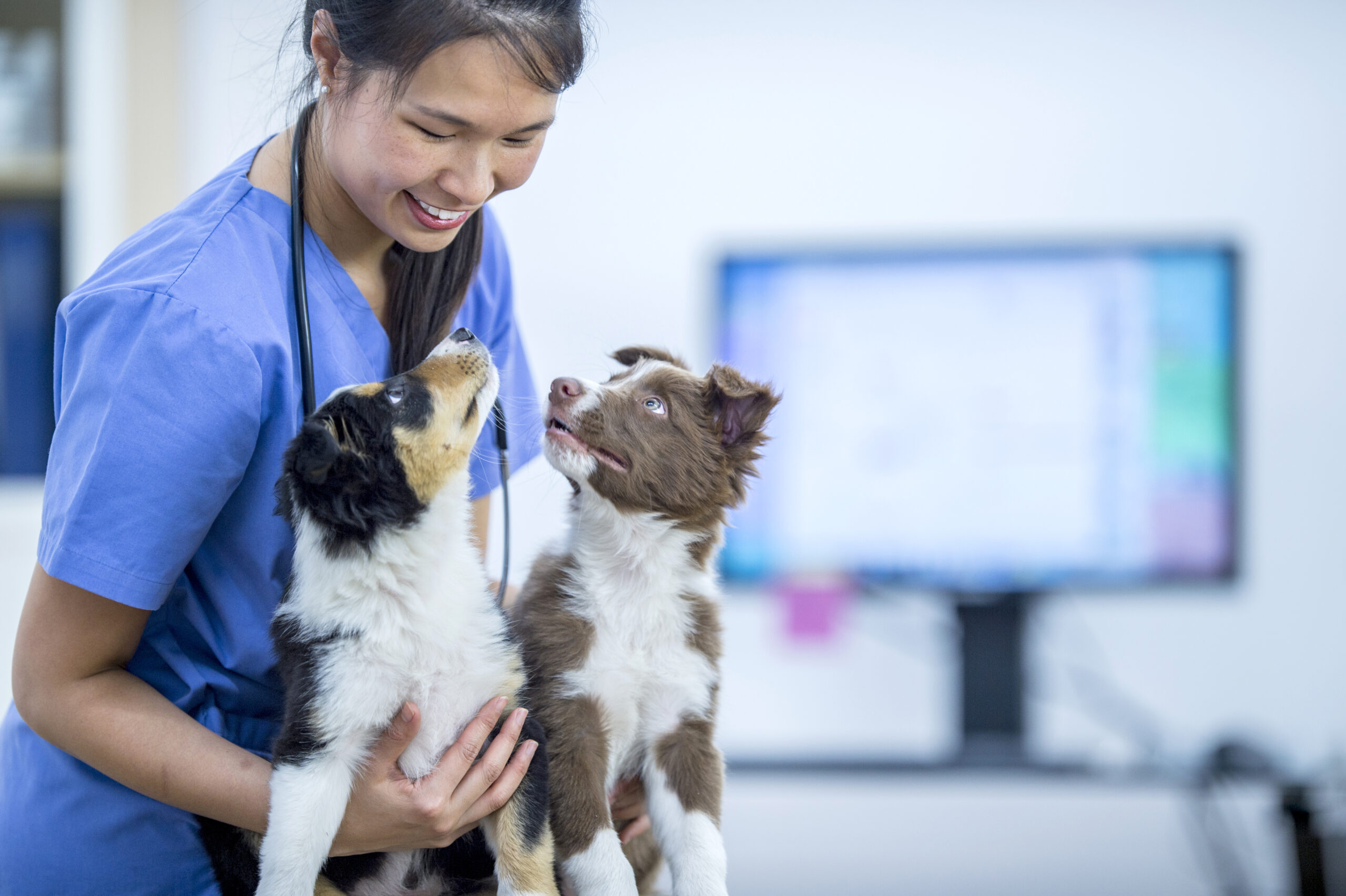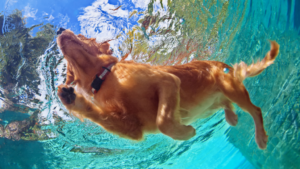Canine Parvovirus is a virus that causes potentially fatal disease in dogs, but especially in puppies under six months of age.
What is Canine Parvovirus?
Canine Parvovirus is a DNA virus called canine parvovirus (CPV). The virus multiplies within cells of the body that are constantly dividing, such as in bone marrow and the lining of the intestines.
Unvaccinated puppies have the highest risk of developing severe disease due to Parvovirus. But any breed or age of dog can be affected, especially if they are not vaccinated.
Signs & Symptoms Canine Parvovirus
Canine Parvovirus is an infectious enteritis, so signs are often associated with the gastrointestinal system. Dogs may appear lethargic, unwilling to eat and show signs of pain in the abdomen, like “bowing” or whimpering. Diarrhoea is a common sign, and this may progress to being haemorrhagic (with blood). Vomiting can also occur. The pup patient may also have a fever. Ongoing signs can be associated with loss of blood and loss of fluids, so dehydration can quickly occur, as well as anaemia, and signs of shock like weak pulses, and collapse. Life threatening sepsis can occur.
Diagnosis
To diagnose Canine Parvovirus the veterinarian will take a thorough clinical history to understand whether the pup patient has potentially had contact with dogs with parvo, such as being in a kennel, shelter, or exposure at a dog park. Understanding whether the patient is fully vaccinated against parvovirus is also very important, as the vaccine is usually very effective. A physical exam will be performed to check for signs of Parvovirus as outlined above. An antigen test may be performed at the vet clinic to help confirm a diagnosis of Parvovirus. PCR testing may also be recommended to detect the virus.
Treatment & Recovery
Once the sign of Parvovirus occurs, they usually progress rapidly, so quick action needs to be taken. Treatment of Parvovirus usually involves hospitalisation and intensive care which may include intravenous fluid therapy, antibiotics, antiemetics, pain relief, plasma transfusions, antiviral medication, and nutritional support. As dogs with Parvovirus disease are also very contagious, they need to be kept in isolation to ensure other pets don’t become infected. Complications can occur with severe Parvovirus including intussusception (where part of the intestine slides into another part, causing blockage of the intestines), secondary bacterial infection and other infections are managed as they arise. Sudden death is a concerning but not uncommon complication of Canine Parvovirus.
Prevention
Vaccination with a modified-live Canine Parvovirus vaccine is highly effective when done at the recommended intervals which usually involves a course of vaccines four weeks apart starting at around 6-8 weeks of age, followed by a booster vaccination after one year. Your vet will be able to advise you of their recommended Parvovirus vaccination protocol as they may differ slightly depending on which vaccine your vet uses. Canine Parvovirus can stay in the environment for a very long time, so it is important to keep unvaccinated puppies and dogs away from areas that could have been exposed to the virus.
FAQs
How much does Canine Parvovirus cost to treat?
According to PetSure claims data from 2022, the average claim amount relating to Canine Parvovirus was $1782. The highest claim cost for Canine Parvovirus in 2022 was $11,520*.
My dog is fully vaccinated, is he safe from catching Parvovirus?
It is possible that a fully vaccinated dog may still contract parvovirus as there, but it will most likely be much milder than if unvaccinated.
How often do I need to vaccinate my dog against parvovirus?
It depends on the vaccination used, but generally if you have a puppy that is 8 weeks old, your puppy will need 2-3 vaccinations 4-6 weeks apart to build immunity against parvovirus. If you have an adult dog, it is advisable to have your dog vaccinated either annually or every three years depending on the vaccine. Your vet will be able to recommend a vaccination protocol for your pet.
Is Canine Parvovirus covered by pet insurance?
Canine Parvovirus is generally covered by comprehensive accidental injury and illness pet insurance policies as well as accidental injury only policies administered by PetSure (check our brand partners at petsure.com.au/partners), unless related to a pre-existing condition or exclusion.
Please refer to your policy documents and Product Disclosure Statement (PDS) for more information.
How does a dog catch canine parvovirus?
Canine parvovirus can be spread in a number of ways including direct contact with infected dogs or their faeces. The virus can exist on surfaces including bowls, toys, clothing and so on. The virus can also exist in soil for a very long time, so back yards that have had infected dogs in them can remain infectious for even a year after the infected dog has left. This is why it is important to keep unvaccinated puppies away from unvaccinated dogs, and unknown environments where they could potentially catch the virus.
Can my cat catch canine parvovirus?
It may be possible for your cat to catch parvovirus from your dog, but this is very unusual and it is unlikely to make them sick. That said, if one of your pets is sick, it is always a good idea to isolate them from all other pets in the household until you know exactly what is wrong with them and know that they aren’t contagious and always follow good hygiene when handling pets.
* Please note that the values calculated are based on all claims for that condition and medically related conditions in each calendar year
References
Alves, F, Prata, S, Nunes, T, Gomes, G, Aguiar, S Aires da Silva, F, Tavares, L, Almeida, V, Gill, S, 2020, Canine parvovirus: a predicting canine model for sepsis, BMC Veterinary Research.
Baker Institute for Animal Health, Canine Parvovirus
Clegg, S, Coyne K, Dawson, S, Spibey, Gaskell, R Radford, A, 2012, Canine parvovirus in asymptomatic feline carriers, Veterinary Microbiology.
Miranda, C, Carvalheira, J, Parrish, C, Thompson, G, 2015, Factors affecting the occurrence of canine parvovirus in dogs, Veterinary Microbiology.
Sykes, J., 2013, Canine Parvovirus Infections and Other Viral Enteritides, Canine and Feline Infectious Diseases.
Pet insurance can help by covering a portion of the eligible vet bill if the unexpected happens. Because it is difficult to predict the costs of veterinary care, it can help to have measures in place to help prepare for the unexpected. Check out our partner network and explore our policy tools to find a pet insurance policy.
Not all conditions or items are covered by Pet Insurance. Refer to the applicable Product Disclosure Statement for information about coverage and exclusions.



 Fact checked
Fact checked




